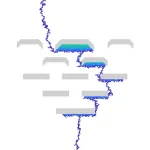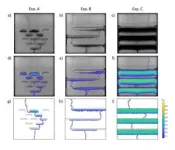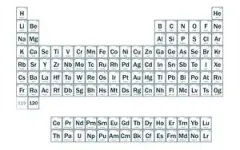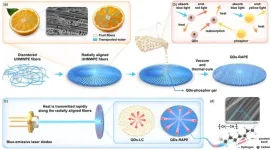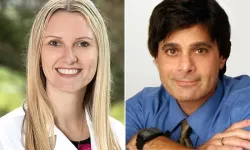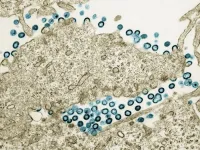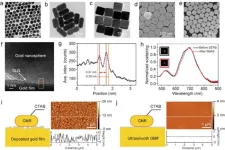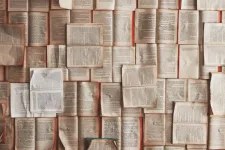(Press-News.org) The overarching goal of all carbon capture and storage projects is the same: Keep carbon dioxide (CO2) emissions out of the atmosphere by storing them in the subsurface for good.
One way to do that is to inject the CO2 into a reservoir space that’s covered with a big lid – an impermeable caprock that can keep the gas in place and stop any upward flow in its tracks. That’s the model that petroleum exploration has relied on for decades when searching for oil traps, and it works for both oil and CO2. But according to research led by The University of Texas at Austin’s Bureau of Economic Geology, subsurface reservoirs that are covered by a collection of hundreds of smaller lids – collectively called a “composite confining system” – may be the better option for keeping carbon trapped for the long term.
That’s good news for the carbon storage industry. This type of distributed system is common in a range of geological environments, including the Texas Gulf Coast.
“Directly under what is the largest concentration of emissions in the U.S. we have incredible reservoirs, but few regional seals. What we have instead, is lots and lots of discontinuous barriers to vertical flow,” said Alex Bump, a research associate professor at the Bureau’s Gulf Coast Carbon Center in the UT Jackson School of Geosciences. “There is a very local motivation for this research but the application is global.”
Many people working in carbon storage have roots in oil and gas – including Bump. The two industries share similar knowledge bases in reservoir geology and fluid dynamics. However, according to Bump, this has also led to some assumptions about optimal carbon storage scenarios – namely, that the same sort of caprock-sealed reservoirs that are proven oil traps should also be the preferred place to store carbon.
According to Bump, there are key differences between hydrocarbon production and carbon storage that suggest rethinking the inherited concepts.
“In petroleum, the goal of production favors large-volume, concentrated, mobile accumulations, so we explore for large traps, and high-permeability reservoirs with an impermeable seal,” said Bump.
That same model works for carbon storage, but the factors that make it ideal for petroleum production make it risky for storage, Bump said. For example, if there is a leak in the seal (such as an improperly decommissioned well), then there is a large, concentrated volume of CO2 that can potentially leak out. In contrast, the multiple barriers of a composite confining systems not only help prevent escape but also help spread the CO2 plume across the available pore space in a reservoir. In doing so, they effectively immobilize the CO2. Even where there might be an escape path, there is little or no mobile CO2 to feed it.
Bump compares the differences between a caprock and composite approach to catching a water leak with a bucket versus a pile of towels. Both can do the job. But there’s no risk of the water spilling with the towels. The towels simply soak it up.
In a paper published in the International Journal of Greenhouse Gas Control, Bump and colleagues at the Gulf Coast Carbon Center, Hailun Ni and Sahar Bakhshian, make the case for composite confining systems for CO2 storage by presenting data from experimental models, numerical simulations and actual reservoirs. Their experiments and numerical models show that the length and frequency of the barriers are the two most influential factors when it comes to an effective confining system. They also found that the barriers don’t have to be particularly substantial to be effective. Even minor reductions in grain size between geologic layers are enough to divert the path of a rising CO2 plume – helping to spread the gas laterally throughout the reservoir, with little migration toward the surface.
Bump said that next on the agenda is to spread the word about composite confining systems for carbon storage. He is currently working on developing a best-practices guide for finding and permitting these types of reservoirs for CO2 storage.
“This is really about creating a user’s manual,” Bump said. “We’re figuring out how to take a good idea and apply it. There are already commercial projects moving forward with this on the Gulf Coast. We want to make it a standard part of the global toolkit for carbon storage.”
END
Better carbon storage better carbon storage with stacked geology with stacked geology
2024-07-23
ELSE PRESS RELEASES FROM THIS DATE:
Sharp temperature reduction for quantum dots in polymer by highly efficient heat dissipation pathways
2024-07-23
A new publication from Opto-Electronic Advances; DOI 10.29026/oea.2024.240036 , discusses sharp temperature reduction for quantum dots in polymer by highly efficient heat dissipation pathways.
Quantum dots (QDs), a kind of luminescent nanocrystals featuring size-tunable emission spectra and superior color purity are widely applied in optoelectronic fields. However, these particles are facing luminous efficiency degradation due to their temperature-sensitive characteristic and the high temperature in optoelectronic ...
UAF researcher creates way to detect elusive volcanic vibrations
2024-07-23
A new automated system of monitoring and classifying persistent vibrations at active volcanoes can eliminate the hours of manual effort needed to document them.
Graduate student researcher Darren Tan at the University of Alaska Fairbanks Geophysical Institute led development of the system, which is based on machine learning. Machine learning is a branch of artificial intelligence focused on building systems that learn from data, identify patterns and make decisions with minimal human intervention.
Details about Tan’s automated ...
Lissajous pattern multi-pass cell: Enhancing high sensitivity and simultaneous dual-gas LITES sensing
2024-07-23
A new publication from Opto-Electronic Sciences; DOI 10.29026/oes.2024.240013 , discusses highly sensitive and real-simultaneous CH4/C2H2 dual-gas LITES sensor based on Lissajous pattern multi-pass cell.
Trace gases are atmospheric constituents with a volume fraction of less than 1%. Despite their low concentrations, nitrogen oxides, hydrocarbons, and sulfides in the atmosphere have a significant impact on the environment, closely related to phenomena such as acid rain, greenhouse effects, and ozone layer depletion. Therefore, race gas detection of is crucial for environmental ...
Asexual reproduction usually leads to a lack of genetic diversity. Not for these ants.
2024-07-23
Genetic diversity is essential to the survival of a species. It’s easy enough to maintain if a species reproduces sexually; an egg and a sperm combine genetic material from two creatures into one, forming a genomically robust offspring with two distinct versions of the species’ genome.
Without that combination of different genetic makeups, asexually reproducing species typically suffer from a lack of diversity that can doom them to a limited run on Earth. One such animal should be the clonal raider ant, which produces daughter after genetically identical daughter directly from an unfertilized ovum ...
Mini lungs make major COVID-19 discoveries possible
2024-07-23
Scientists at Sanford Burnham Prebys, University of California San Diego and their international collaborators have reported that more types of lung cells can be infected by SARS-CoV-2 than previously thought, including those without known viral receptors. The research team also reported for the first time that the lung is capable of independently mustering an inflammatory antiviral response without help from the immune system when exposed to SARS-CoV-2.
This work is especially timely, as cases of COVID-19 are on the rise in the scientists’ hometown of San Diego during a summertime spike. Looking beyond the region, more than half of the states in the country have reported “very ...
Exploratory analysis associates HIV drug abacavir with elevated cardiovascular disease risk in large global trial
2024-07-23
WHAT:
Current or previous use of the antiretroviral drug (ARV) abacavir was associated with an elevated risk of major adverse cardiovascular events (MACE) in people with HIV, according to an exploratory analysis from a large international clinical trial primarily funded by the National Institutes of Health (NIH). There was no elevated MACE risk for the other antiretroviral drugs included in the analysis. The findings will be presented at the 2024 International AIDS Conference (AIDS 2024) in Munich, Germany.
The Randomized Trial to Prevent Vascular Events in HIV (REPRIEVE) enrolled 7,769 study participants with HIV from 12 countries that found ...
Control of light–matter interactions in two-dimensional materials with nanoparticle-on-mirror structures
2024-07-23
A new publication from Opto-Electronic Sciences; DOI 10.29026/oes.2024.230051 , discusses control of light–matter interactions in two-dimensional materials with nanoparticle-on-mirror structures.
With the rapid development of high bit-rate wireless services driven by mobile internet, AI computing, high-definition videos, virtual reality/augmented reality (VAR) applications, and so on, the demand for wireless data rates has grown explosively in the past decades1, 2. Supporting such fast data rate at tens of Gbit/s pushes the carrier frequency to the THz (0.1-10 THz) ...
Does the onset of daylight saving time lead to an unhealthy lifestyle?
2024-07-23
Researchers from North Carolina State University, University of Manitoba, Bern University of Applied Sciences, University of South Carolina, and California Baptist University published a new Journal of Marketing study that explores whether the onset of daylight saving time leads consumers to engage in unhealthy behaviors.
The study, forthcoming in the Journal of Marketing, is titled “Spring Forward = Fall Back? The Effect of Daylight Saving Time Change on Consumers’ Unhealthy Behavior” and is authored by Ramkumar Janakiraman, Harsha ...
Best Paper awards lack transparency and do not increase equitability
2024-07-23
Research awards are an integral part of the universal “prestige economy” in science, but do they incentivize greater transparency, inclusivity, and openness? This study uses cross-disciplinary data to explore the level of transparency of publicly available award descriptions and assessment criteria, asking whether such awards contribute to or propagate existing reproducibility crises and inequities in science.
#####
In your coverage, please use this URL to provide access to the freely available paper in PLOS Biology: http://journals.plos.org/plosbiology/article?id=10.1371/journal.pbio.3002715
Article ...
Brain’s support cells contribute to Alzheimer’s disease by producing toxic peptide
2024-07-23
Oligodendrocytes are an important source of amyloid beta (Aβ) and play a key role in promoting neuronal dysfunction in Alzheimer’s disease (AD), according to a study published July 23, 2024 in the open-access journal PLOS Biology by Rikesh Rajani and Marc Aurel Busche from the UK Dementia Research Institute at University College London, and colleagues.
AD is a devastating neurodegenerative disorder affecting millions of people worldwide. Accumulation of Aβ – peptides consisting of 36 to 43 amino acids – ...
